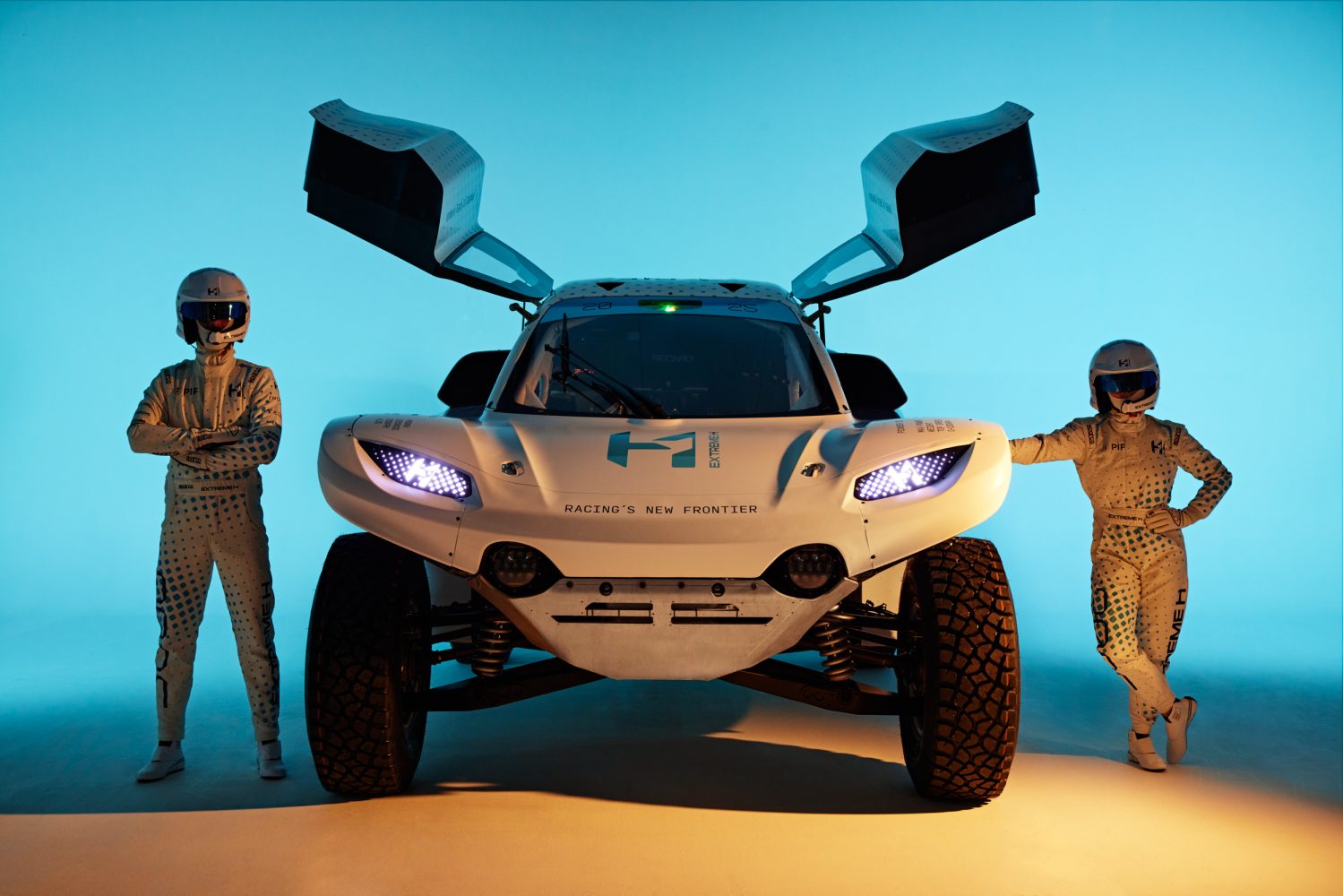
Extreme E, the electric off-road racing series, is transitioning to using hydrogen instead of batteries for the 2025 season, and today it unveiled the car it plans to use next year – when it will also change its name to Extreme H.
Extreme E is in the midst of its fourth season right now, having had the first race weekend in Saudi Arabia and with the second race weekend coming up in Scotland, July 13-14.
In the past three seasons, we’ve been treated to some pretty wild off-road racing, with powerful electric cars bouncing over desert sand dunes, glaciers, beaches, and even an old coal mine.
It’s been exciting to watch, but the series also has a sustainability message – each location is meant to highlight an ecological issue we’re all facing, and the series also does a “legacy programme” where it participates in attempting to solve some local conservation issue (e.g. mangrove or ocean seagrass preservation, wildfires, glacier melt, or so on).
To this end, the series also focuses on being sustainable in its own practices. Cars are shipped from race to race on the St. Helena, an ship converted to use more sustainable technologies and to serve as a research lab for the scientists the series partners with. And the series tries to create less waste in each of its locations, with everyone bringing their own reusable plates and silverware for example.
And since it races in remote locations, it needs to get energy from somewhere. The cars don’t just charge themselves. So the series has been using green hydrogen – made with renewable energy, as opposed to the majority of hydrogen which comes from methane gas – to charge vehicles, with large transportable fuel cells (and second life batteries for backup) bringing power to areas where the grid doesn’t reach.
So, for season 5, Extreme E is “cutting out the middle man” and just going straight from hydrogen to electric power onboard the car, instead of charging a battery with an offboard fuel cell. And here’s next season’s vehicle, which Extreme E – or rather, Extreme H, as it will be known starting in 2025 – is calling the “Pioneer 25.”
Extreme H unveils Pioneer 25 race car
The Pioneer 25 shares a lot of similarities with the outgoing Odyssey 21 car.
They both have ~400kW/550hp worth of power available, can do 0-62mph in 4.5 seconds with a top speed of ~200kph (~124mph), and can scale a slope of up to 130% (53º). So in terms of the basic specs, the cars seem quite close.
But there are a couple small differences that we can see so far. The Odyssey 21 was 2.3 meters wide, and the Pioneer 25 is 2.4 meters. The Odyssey had two “seats,” with the driver offset to the left, whereas the Pioneer seats the driver in the center.
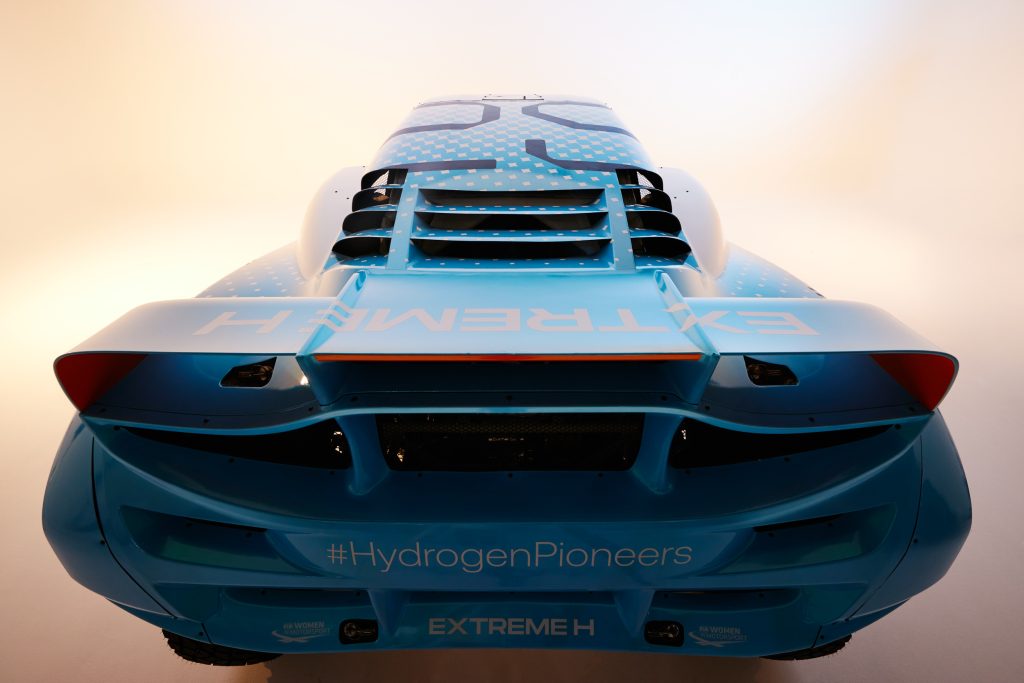
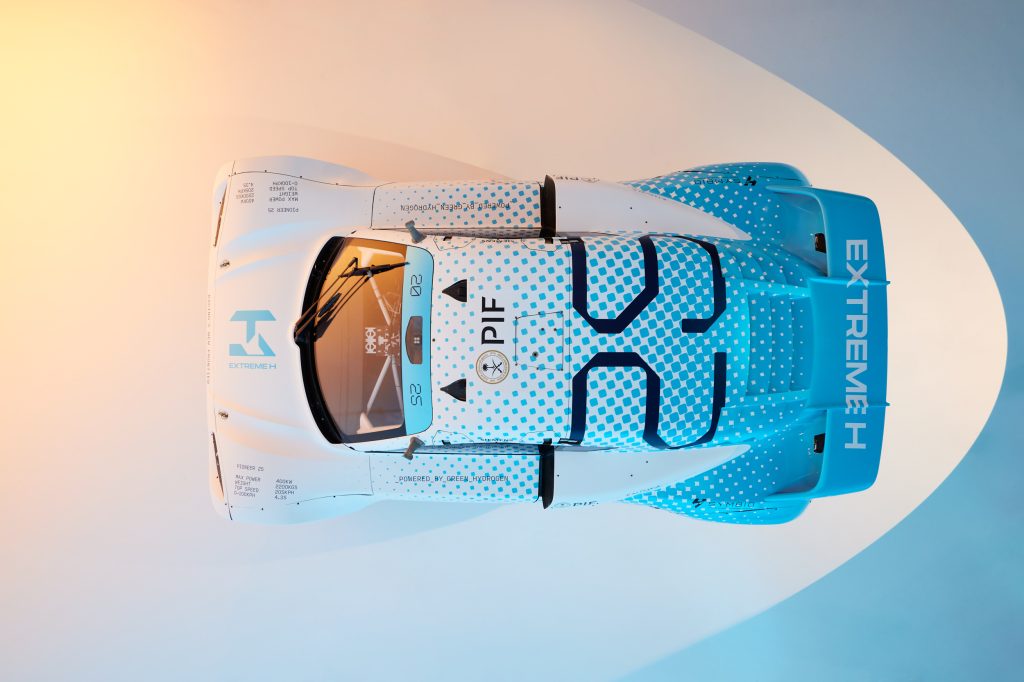
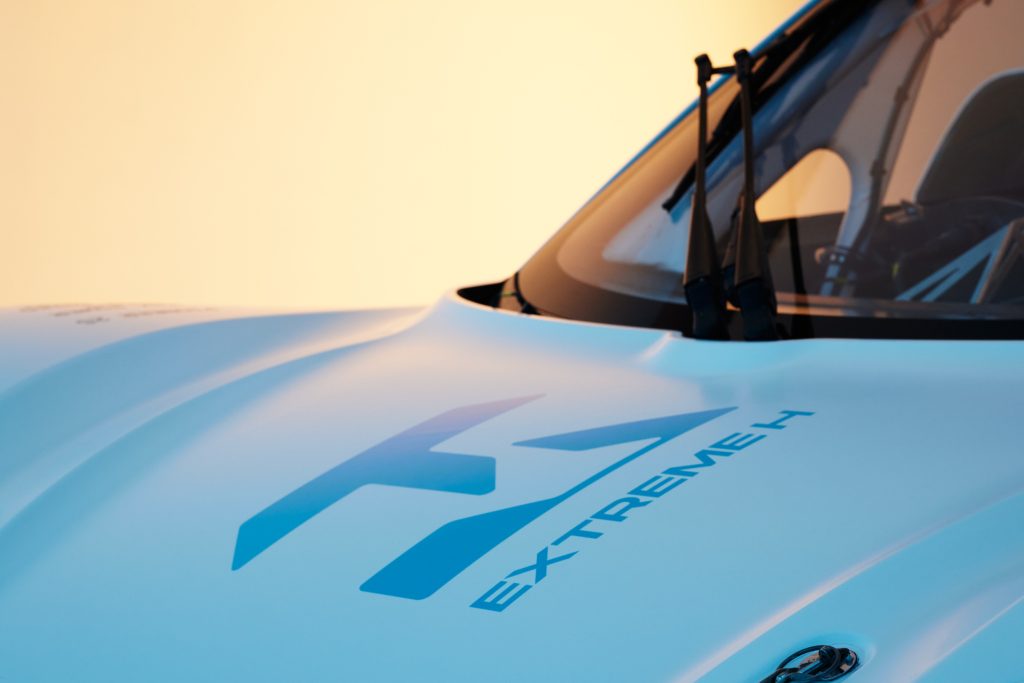
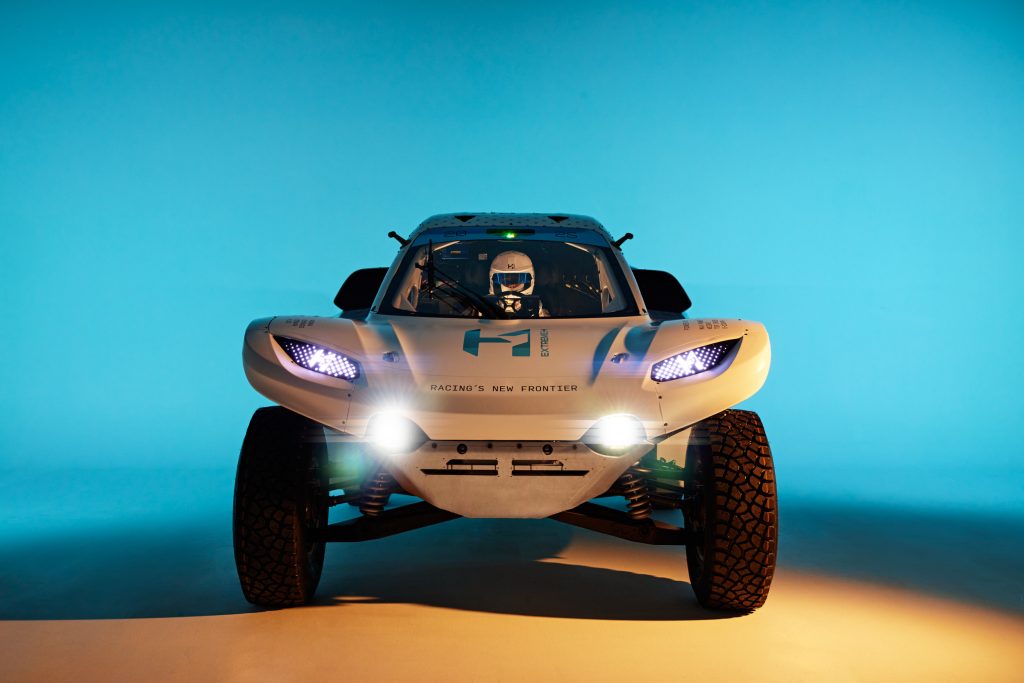
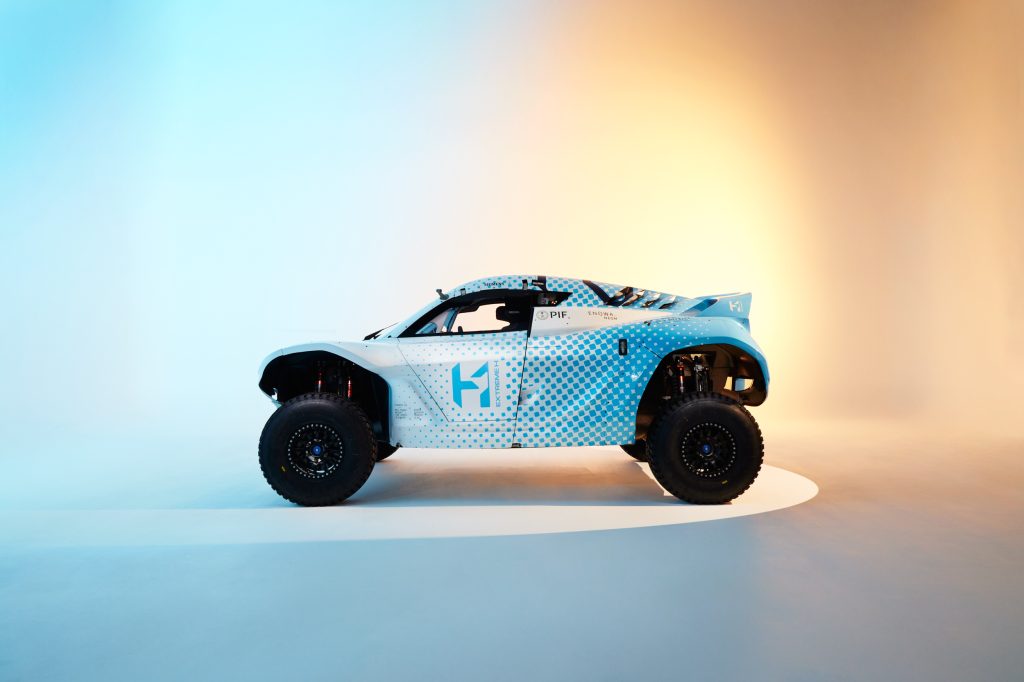
And the biggest difference of all – Extreme E said that the Odyssey weighs 1,895kg (we’re not sure if this includes the driver or not), but it says that the Pioneer weighs 2,200kg, a 305kg (672lb) increase.
That’s a massive difference, especially for a race car, and especially if the cars have the same power available. We’re not sure how they can quote the same 0-60 time with such a weight difference and no difference in motor power (torque is not listed, but is likely the same given that battery electric (BEV) and fuel-cell electric vehicles (FCEV) both run on electric motors, so we’d imagine they’re carrying over the same or similar motors).
And we’re also not sure where all that weight is coming from. One of the supposed benefits of hydrogen is higher energy density, which means less need for heavy EV batteries. But an FCEV needs two more parts that a BEV doesn’t – a fuel cell stack and a high-pressure hydrogen tank. FCEV’s also have a battery to act as a buffer for the fuel cell stack, but it can be a lot smaller than on a full BEV.
But the Odyssey only had 54kWh (40kWh usable) of batteries onboard to begin with – relatively small in the scheme of EV batteries these days. Off-road racing is energy intense, but races for the series aren’t very long, so 40kWh is enough. So cutting battery size could save some weight, but not all that much.
So perhaps the Pioneer still has a relatively large battery (as larger batteries can push more power), and the additional weight of a fuel cell stack and high pressure tank – the last of which has to be pretty heavy duty to hold hydrogen, especially in the difficult racing conditions Extreme H will be racing in (a 700 bar, 4-6kg capacity tank is around 100kg – the Pioneer has a 2kg tank, but may be reinforced more for racing purposes).
Extreme H says that “overall performance of the car has taken a big step forward,” and that the suspension geometry of the car has been fully redesigned. The Odyssey also saw changes over its lifetime, changing suspension suppliers last season to FOX, and the Extreme H will also use FOX suspension.
But we’re still not sure how a car with identical power and much more weight can perform better. Let’s go ahead and put a pin in that for when we see these cars in action.
Thankfully, we’ll have a chance soon. The Pioneer 25 will go on its first public test at the Hydro X Prix in Scotland on July 13-14.
Extreme H also announced a provisional list of race locations for next year, with races in Saudi Arabia, UK, Germany, Italy, and USA.
Electrek’s Take
I think that most of our readers recognize at this point that hydrogen is not going to take off in consumer vehicles. If this series wants to push hydrogen as an idea for consumer cars, or for sportscars, it’s… probably not going to go anywhere.
However, for the race series’ specific use case, it makes some amount of sense. The series was already using hydrogen anyway, and hydrogen is a lot more portable than batteries for places with no grid. And Extreme E thinks it has made its point, demonstrated that BEVs are capable of this type of racing, and can move on to something new now.
But the fact that this move has resulted in such a huge weight gain for the cars is puzzling to me. While I have seen extremely heavy tanks on fuel cell vehicles before (e.g. the Nikola Tre FCEV class 8 truck has four tanks weighing 450lb each, a fuel cell stack and a 164kWh buffer battery, and the Honda CR-V e:FCEV is 1,000lbs heavier than the gas CR-V), you don’t normally see racing/sports cars gaining such enormous amounts of weight in the span of one generation (the 1,000+lb heavier 2025 BMW M5 notwithstanding).
Top comment by Pele
I honestly don't understand this. I see them creating a separate new race series using hydrogen but transitioning from electric to hydrogen seems illogical. Especially as teams have gotten used to electric vehicles over the last few years. All the other new electric race series, such as Formula E and others, have worked to improve their underlying technology, not swapping the platforms of their vehicles halfway through. Honestly, I hope the teams revolt lol.
So I struggle somewhat to see the point of this. Previously, Extreme E hosted awesome race events with a neat story, demonstrating environmental issues and showing a realistic and sustainable answer for transportation – BEVs. It fueled those BEVs with hydrogen through offboard stacks and tanks, leaving the weight and complexity of them behind in the paddock as the cars frolick around in the dirt.
Now, it’s hosting awesome race events with a neat story, demonstrating environmental issues and showing off… a transportation answer that demonstrably doesn’t make any sense, lumbering around carrying all this extra equipment that will never see the light of day at scale in consumer applications.
The one thing it could help to encourage is getting the green hydrogen economy going, since currently ~95% of the global supply of hydrogen comes from methane, a fossil fuel that is incredibly damaging from a climate perspective. Green hydrogen is generated by electrolysis of water via renewable energy, essentially using the hydrogen as a more portable but less efficient battery to store that renewable energy.
A green hydrogen economy could be useful if we ever come up with widespread uses for hydrogen (which could find a niche in heavy transport) – but those uses aren’t likely to come in consumer applications. And if they result in a 305kg weight penalty, I don’t really see them happening in racing applications either.
FTC: We use income earning auto affiliate links. More.





Comments